By: Jeremy Neisser
Antennas are elements that can receive or transmit radio waves. Antenna types vary according to the frequency of the radio waves they are designed for, among other things.
What are the Different Types of Antennas?
Generally, there are three large groups of antennas: directions, semi-directional and Omni-directional antenna. Most antennas fall into one of these three groups.

1. Directional Antenna
A directional antenna sends and receives a beam of radio energy in a particular direction, whereas a nondirectional antenna broadcasts radio waves in all directions. The first group provides a concentration of energy along the direction of the beam; this increases the intensity of radiation in that particular direction but doesn't affect the other directions. What different types of antennas are there?
Directional Antenna: A directional antenna is an antenna that radiates or receives greater power in specific directions so it can be used to "focus" the transmission from one device to another. This makes it easier for the receiving device to distinguish between multiple signals that are coming in simultaneously.
Directional narrow beam antenna: Directional narrow beam antenna is an antenna in which the main lobe of radiation (the beam) is confined to a relatively narrow-angle in azimuth or elevation. It has high gain but must be aimed with sufficient accuracy at the receiving station.
Directional medium beam antenna: This type of directional antenna gives an intermediate level between the wide-angle and the narrow-beam types. The main lobe is at a medium angle in azimuth or elevation, and has high gain but requires reasonably accurate aiming.
Directional wide beam antenna: A directional antenna that covers a wide area, often called an omnidirectional antenna, because it radiates equal power in all directions. It has low gain and often requires a long antenna.
-You may like: Antenna Gain vs Differences - Differences Explained
2. Omni-Directional Antenna:
As the name implies, an omnidirectional antenna is able to send out signals in all directions without having to adjust the direction of the device.
This type of antenna is used on many mobile devices such as cell phones and tablets because it is able to send out signals in any direction the device is facing, much like an Omni-directional antenna.
3. Semi-Directional Antennas:
A Semi-directional antenna is an antenna that radiates energy in a semi-circle and doesn't provide much gain at all.
This type of antenna is used in cases where it's necessary to cut through interference while also providing some gain (for example: when trying to pick up distant signals on a noisy channel).
One such situation where this type of antenna is typically used is on a satellite.
Out of these three-antenna categories, there are many different types of antennas that are used specifically for broadcasting.
From high gain antennas, to wide-band and broadband antennas, the list is endless.
You might be interested in Best CB Radio - The Top 11
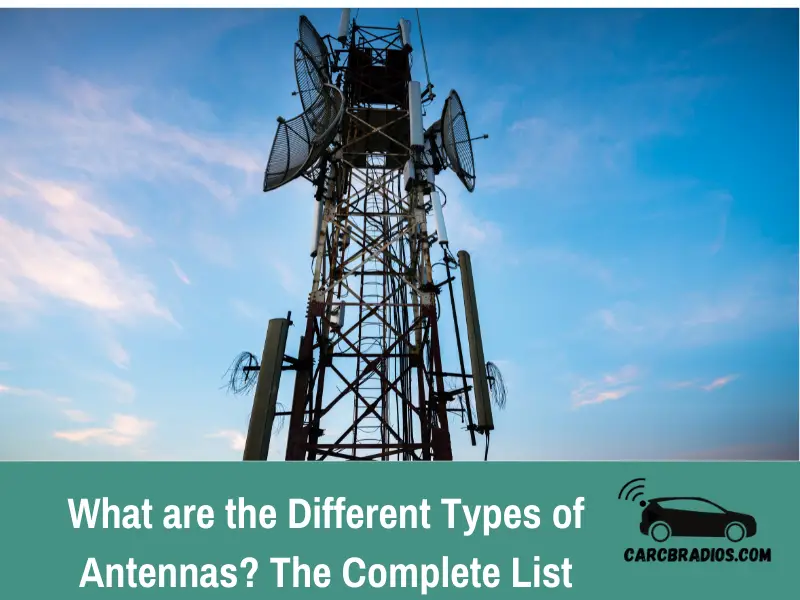
The Different Types of Antennas
Broadcasting Antenna
A broadcasting antenna or broadcast antenna is an antenna typically used in radio or television broadcasting, although other applications exist such as radioteletype and land mobile radio systems.
These types of antennas use some type of directional design to direct the radio waves into a broad beam shape.
For example, if an antenna was designed to broadcast at a frequency of 100 MHz (megahertz) and 200 MHz, it would need to be able-bodied enough to do so regardless of what direction the user is facing.
Some common types include omnidirectional, log-periodic antennas, and yagi antennas.
Log Periodic Antenna
A log-periodic antenna has a similar function to an omnidirectional antenna; it broadcasts signals coming from all directions equally.
This type of antenna is commonly used because it's flexible and easy to set up.
The log-periodic antenna is a directional antenna, which means it can direct or beam the energy in one direction better than other types of antennas.
Dipole Antenna
The most common form of antenna is the "dipole" type. It is a simple design element that can be used to both broadcast and receive electromagnetic waves over a wide range of frequencies.
It consists of two conductors (of equal length) which are parallel and spaced apart from one another.
Dipole antennas are commonly found in portable radios, walkie-talkies, and other types of devices that operate on low power.
These antennas can be either omnidirectional or directional. A half wave dipole antenna is a type of dipole that has a single half wave conductor on each side.
Folded Dipole Antennas: In general, the foldover design means that the elements are folded back over onto themselves in order to reduce the size of the antenna while retaining its basic operating capabilities.
You may like: The Best CB Base Antennas - Complete TESTED List
The Yagi-Uda Antenna
This directional antenna consists of several thin rod elements, all of which are aligned in a row. A single element is straight while the rest of the rods are parasitic, meaning they are curved or angled opposite the main direction of the antenna's main beam or axis. The Yagi-Uda design was developed by two Japanese engineers named Hidetsugu Yagi and Shintaro Uda as a way to improve the performance of a dipole antenna.
Monopole Antenna
The simplest type of "wireless" antenna is the monopole antenna, which is actually any vertical metal pole that broadcasts the radio waves from one end and receives them at the other tip. This simple monopole antenna design has been used since man first discovered that radio waves could be used to transmit messages.
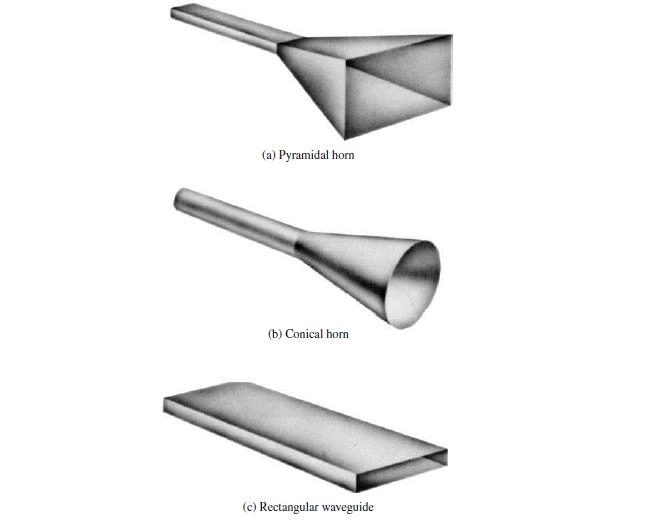
https://www.researchgate.net/figure/Aperture-antenna-source-1_fig3_312523480
Aperture Antenna
This type of antenna is a variation in the dipole design. It consists of a U-shaped metal loop or strips with an opening at one end that has been folded over onto itself. The aperture antenna uses the opposite electric and magnetic field behavior than traditional dipole antennas.
Multiband Antenna
This is a variation of the dipole antenna that has been configured for multiple bands, allowing it to transmit and receive on multiple frequencies simultaneously. Such antennas are typically used in mobile devices such as cell phones because they are designed to pick up transmissions from different cellular networks within one device.
Parabolic Reflector Antenna
To achieve better overall performance, many antennas use reflectors to shape and direct the energy radiated by the antenna.
This makes it easier for the antenna to "capture" weaker signals that would otherwise be lost. The parabolic reflector antenna consists of one or more concave metal dishes which act as both reflector and director elements.
The parasitic elements are the ones that do not perform as well acoustically, but they help direct the energy in the desired direction.
The Yagi-Uda antenna takes this idea to another level, with almost every element being parasitic and thus acting as both reflector and director.
Phased Array Antenna
The phased array antenna has many different variations and can be designed to emit beams of energy in almost any direction.
A typical example consists of an assemblage of multiple individual dipoles arranged in an array and driven by a transmitter that has either manual or electronic beam steering capabilities.
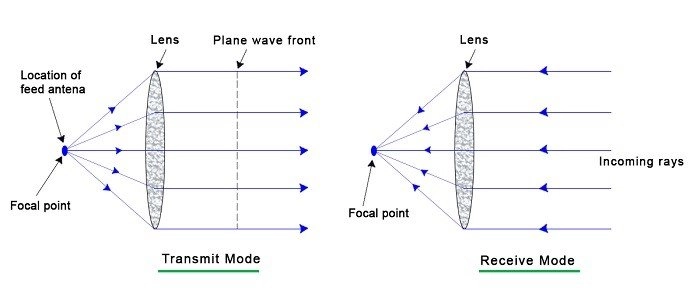
https://www.everythingrf.com/community/what-is-a-lens-antenna
Lens Antennas
A lens antenna is a specific type of phased array that uses a large metal sheet with many holes in it.
The holes focus the radio waves into a tight beam and increase the gain of the antenna significantly over a wide range of frequencies.
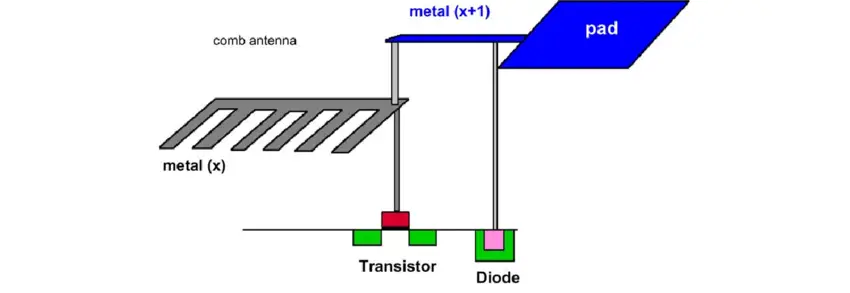
https://www.researchgate.net/figure/Typical-comb-antenna-structure-used-to-study-the-impact-of-a-given-metallization-step-of_fig1_220454746
Comb Antennas
A comb-array or "spiral" antenna has elements arranged in a cylindrical shape. It uses the same basic technology as a Yagi-Uda antenna but is designed with loops that are spaced around the periphery of a cylinder rather than in a straight line.
Loop Antennas
A loop antenna consists of one or more loops of wire which are typically arranged in the shape of a circle, oval or square.
This type of antenna is typically used as a receiving device to pick up very low-power long-distance transmissions from AM radios, police radar guns and other remote devices with limited power capabilities.
Grid Antennas
A grid antenna is a type of linear array in which the receiver, transmitter or both are mounted on an angle to provide better rejection of noise or interference that may be present within the transmission medium.
This type of antenna operates by adding parasitic (director) elements that are staggered on either side of the main (driven) element to form a grid or "shingle."
Folded Antennas
Folded-dipole antennas have been modified by adding a third arm to the dipole so they will be folded over on themselves thus reducing their height.
This type of antenna is frequently used by amateur radio operators and in limited space situations such as on a sailboat.
You may like: The 4 Types of CB Radios
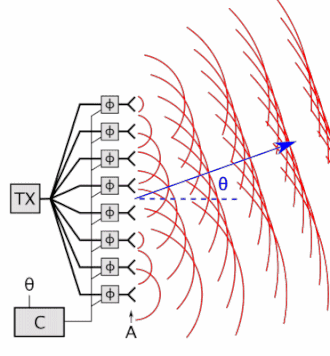
https://en.wikipedia.org/wiki/Phased_array
Phased Array Antenna
The phased array antenna has many different variations and can be designed to emit beams of energy in almost any direction.
A typical example consists of an assemblage of multiple individual dipoles arranged in an array and driven by a transmitter that has either manual or electronic beam steering capabilities.
There are two types of antennas in general use today which utilize 2-dimensional arrays.
These are the microstrip antenna and the patch antenna. The main difference between the two is that the microstrip antenna has a conducting ground plane at its rear while the patch antenna has an open feed point.
The slotted waveguide consists of a metal sheet pierced by many holes, slots, or openings all having near right-angle bends. This type of antenna is used as a transmitting device and reflects most of the energy off the metal back toward the ground thus creating a theoretical isotropic radiator.
What are radiation patterns for antennas? Is the beam omni-directional, directional or semi-directional?
Radiation Pattern: This is a plot that shows the relative field strength or power density vs. the angle in the horizontal plane (azimuth) and also vs. the vertical plane (elevation).
The polar diagram shows one possible radiation pattern of an antenna at right angles to its main beam, while other plots show how it would look in various directions within the main beam including side lobes.
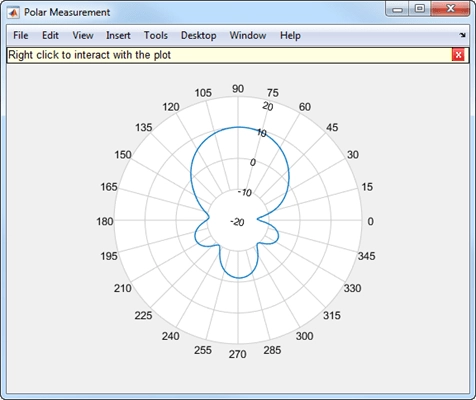
https://www.mathworks.com/help/antenna/ref/polarpattern-class.html
Radiation Pattern of Antennas is classified as omnidirectional, directional, semi-directional. Omni-Directional: An Omnidirectional antenna can receive or send radio waves to its surrounding area in all directions equally well.
Semi Directional: A semi-directional antenna will have a certain critical angle above which it will be capable of sending or receiving radio waves.
Below this angle, the antenna should not be used as it will send out only power in the direction of its critical angle.
At critical angles, there is no difference between transmitting and receiving; therefore, semi-directional antennas are suitable for applications where the main objective is to cover a specific area (e.g., sending/receiving signals between two mountain tops).
Omnidirectional antennas are used in areas where it is necessary to cover a wide coverage area with the transmitted signal, e.g., when there are no obstructions or reflections that would distort the signal strength pattern in any way.
Antenna radiation patterns are normally represented as polar diagrams or in three-dimensional Cartesian coordinates. Therefore, the antenna designer has to convert her/his design into these two formats before taking measurements.
The principal advantage of these two coordinate systems is that they are both planar and thus can be plotted on a single sheet of paper.
Disadvantage: As you will notice, both polar and rectangular coordinates present some limitations. Since, for example, the coordinate system is not symmetrical about the z-axis (i.e., it is one dimensional), you gain an extra degree of freedom by using Cartesian coordinates over polar diagrams (for the same antenna).
That is because you can introduce a shift in any position along the x-axis (or y-axis), so you can "rotate" the coordinate system without changing its shape or size, allowing additional freedom to find the best pattern of an antenna.
There are three types of antennas in use today which utilize 3-dimensional arrays of strung wire, metal rods, or conductive elements that split the signal into the desired number of beams.
These are the Yagi-Uda Antenna, the Dish Antenna, and the Reflector antenna.
A variant, called a corner reflector consists of three flat surfaces arranged at right angles to each other forming a triangle with the open side facing forward and providing slightly greater gain than the equivalent parabolic dish.
Corner reflectors can be used to provide a wide directional pattern over a relatively narrow-angle.
This is achieved by having several dipole elements, all with the same directional polarization such as Vertical or Horizontal. A balun is usually required at the feed point to transform from a balanced line (twin-lead) to an unbalanced line (coaxial cable).
There are many other different types of antennas, each of which is designed for specific uses depending on the desired frequency of operation, power levels, bandwidths, and other factors.
You might be interested in: Best Dual Band Base Antennas - Top Picks

Hi & Welcome!
My name is Jeremy and I have been an avid car nut for many year. My first car was an 1987 Honda CRX. I put in my first Kenwood stereo, amp, 2 10" JLs and a CB Radio in it and have been an avid user of CBs and car radios for years. I'll do my best to share my tips, information and thoughts to help you with whatever question you might have, ABOUT ME
After I graduated from High School, I worked 5 years are Radio Shack and 3 years at Circuit City answering questions and helping customers with various electronics questions.


















